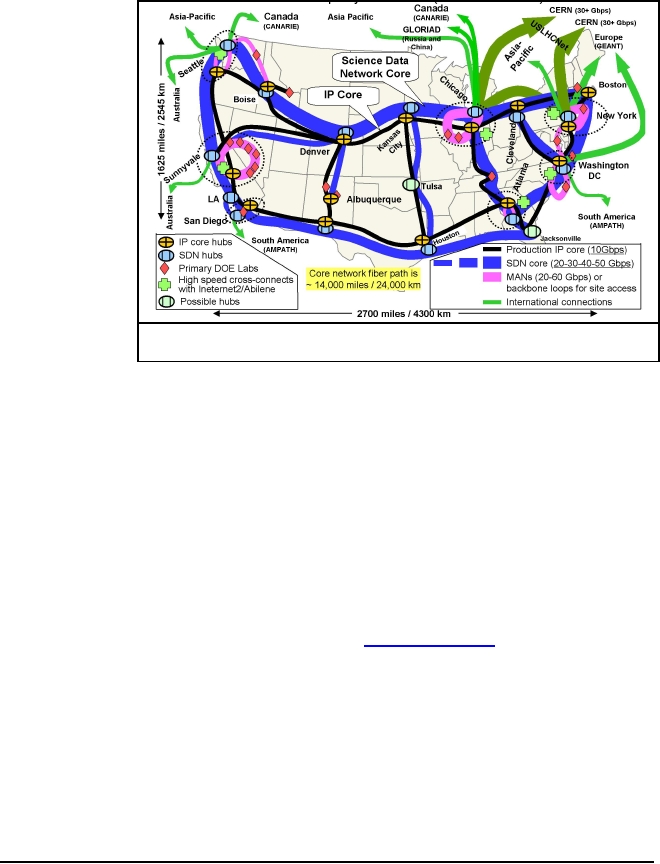Meeting Bandwidth Requirements:
The end-state of
ESnet4
is
illustrated
in
characterized by a
topological
richness
that
provides
resiliency,
flexibility,
and
scalability.
Resiliency comes
from
the
multiplicity
of
paths
between
any two locations
which
allow
transparent
Figure 10:ESnet4 End-Game: Core networks 50-60 Gbps by 2009-2010
recovery
from
(10Gb/s circuits), 500-600 Gbps by 2011-2012 (100 Gb/s circuits)
link
and
routing/switching element failure and in traffic engineering such as load balancing and congestion
avoidance because of the multiple paths between locations. It also provides for flexibility in the
deployment of new circuits both to match emerging science bandwidth needs and to deal with
changes in Office of Science budget priorities that might dictate a faster or slower build-out of the
network than what is currently planned. In providing the steadily increasing bandwidth that
projections from the science community indicate is required, in addition to adding 10Gb/s optical
circuits every year, it is expected that in the five-year time frame (20102012) that the capacity of
the individual optical circuits will increase from the current 10Gb/s to 100Gb/s. This will be taken
advantage of by replacing the current generation of routing/switching devices with next-
generation devices.
Status and Schedule:
The ESnet4 circuit deployment is on-schedule. See www.es.net/ESnet4 for more information.
The 12/2007 circuits are shown in Figure 8. The SDN switches for the SDN core nodes will be
ordered within the next few months. In the 2010 time frame we anticipate that the optical
infrastructure will be upgraded from 10 GB/s per circuit to 100Gb/s per circuit. ESnet is planning
for an equipment upgrade at that time which will result in SDN becoming a 500Gb/s backbone.
Note that the rollout schedule given above and in the presentation on the Web is our current best
estimate. Schedule risks include equipment delivery delays and the impact of Federal budget
changes.
Managing Large-Scale Data Flows, Virtual Circuit Services:
The need for virtual circuit (VC) services to provide quality of service (QoS e.g., guaranteed
bandwidth) and traffic isolation were identified as one of the most important new network
services by the science requirements workshops 0, 0.
27

